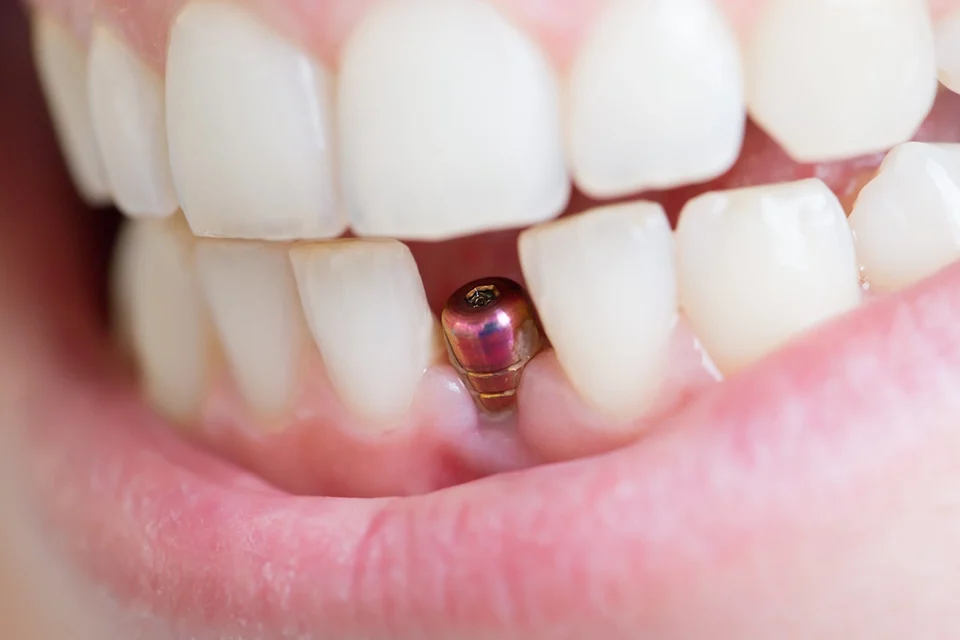Dental implants have become popular for people who want to replace missing teeth. Dental implants offer a long-lasting, natural-looking alternative to dentures and bridges, restoring both function and aesthetics to your smile. Moreover, this comprehensive guide to the dental implant procedure will help you understand what dental implants are, how they work, and why they’re worth considering.
What Are Dental Implants?
Dental implants are titanium or ceramic fixtures surgically placed in the jawbone to replace missing teeth. Unlike traditional dentures or bridges, implants are anchored directly into the bone, resulting in a stable foundation that mimics the root structure of natural teeth. Moreover, each implant has three main parts:
- Implant: The titanium post that integrates with the jawbone, acting as an artificial root.
- Abutment: The connector placed on top of the implant to hold the replacement tooth.
- Crown: The visible part of the implant, designed to match your natural teeth.
Dental Implant Procedure Step-by-Step
Preparation: Consultations, X-Rays, and Planning
Getting dental implants begins with a thorough consultation with your dentist, who will review your dental and medical history and perform a physical examination. Dentists also commonly use X-rays or 3D imaging to assess bone density and determine whether bone grafting is necessary. Moreover, they use bone grafts when the jawbone is insufficient to support an implant, which can be critical for a successful procedure.
The Surgery
Phase 1: Implant Placement
The dentist surgically places the implant into the jawbone during the first phase. Moreover, here’s a breakdown of this step:
- Anesthesia: The procedure begins with local anesthesia to numb the area and ensure the patient’s comfort.
- Insertion: After the anesthesia takes effect, the dentist makes an incision in the gum to access the bone and then drills a small hole in the jaw where the implant is inserted.
- Recovery Time: This stage takes about 3-6 months to heal. It allows bone to grow around the implant in a process known as osseointegration, resulting in a stable foundation.
Healing and Osseointegration
Osseointegration is a critical process in which the implant fuses with the jawbone to provide long-term stability. During this period, which can last several months, patients should closely follow their dentist’s instructions, which may include dietary restrictions, oral hygiene practices, and avoiding strenuous activities.
Abutment Placement and Crown Attachment
Once osseointegration is complete, the dentist performs a minor procedure to attach the abutment supporting the crown. The gums will need a few weeks to heal around the abutment before the crown (customized to match the color and shape of the surrounding teeth) is attached, completing the implant procedure.
Cost of Dental Implants
The cost of dental implants varies significantly depending on the number of implants, the need for bone grafting, and the dentist’s expertise. An implant typically costs between $3,000 and $5,000, though it can be higher in some cases. Consult with your dentist for a personalized estimate and, if necessary, explore financing options.

Benefits and Risks of Dental Implants
Benefits
- Improved Oral Health: Implants do not necessitate the alteration of adjacent teeth, thereby preserving the natural tooth structure.
- Durability: Dental implants can last a lifetime with proper maintenance.
- Aesthetics: Implants resemble and feel like natural teeth, providing a seamless and appealing solution to missing teeth.
- Convenience: Implants eliminate the discomfort of removable dentures and also do not require messy adhesives.
Risks
- Infection: As with any surgical procedure, there is the possibility of infection at the implant site.
- Nerve Damage: If the implant is too close to a nerve, nerve damage can cause pain, numbness, or tingling.
- Implant Failure: Although rare, implants can sometimes fail if osseointegration does not occur properly or if excessive force is placed on the implant.
Frequently Asked Questions (FAQs)
How long do dental implants last?
Dental implants can last a lifetime with proper maintenance, which includes regular dental check-ups and good oral hygiene.
Is the procedure painful?
Local anesthesia is used during surgery, so patients experience minimal discomfort. Mild soreness is common afterward; you can manage it with pain medication.
Can anyone get dental implants?
Most people are candidates, but adequate bone density and healthy gums are necessary. A consultation with a dentist is necessary to determine eligibility.
How do I care for dental implants?
Brushing, flossing, and visiting the dentist regularly are necessary to care for implants.
Dental implants are a revolutionary way to replace missing teeth, offering a stable, long-term solution that looks and functions like natural teeth. Furthermore, at Zara Dental in Houston, we are committed to providing high-quality dental implant procedures tailored to each patient’s specific needs. Schedule a consultation with us to learn how dental implants can restore your smile and improve your quality of life. Contact us today to begin your journey to a healthier, more confident smile!








